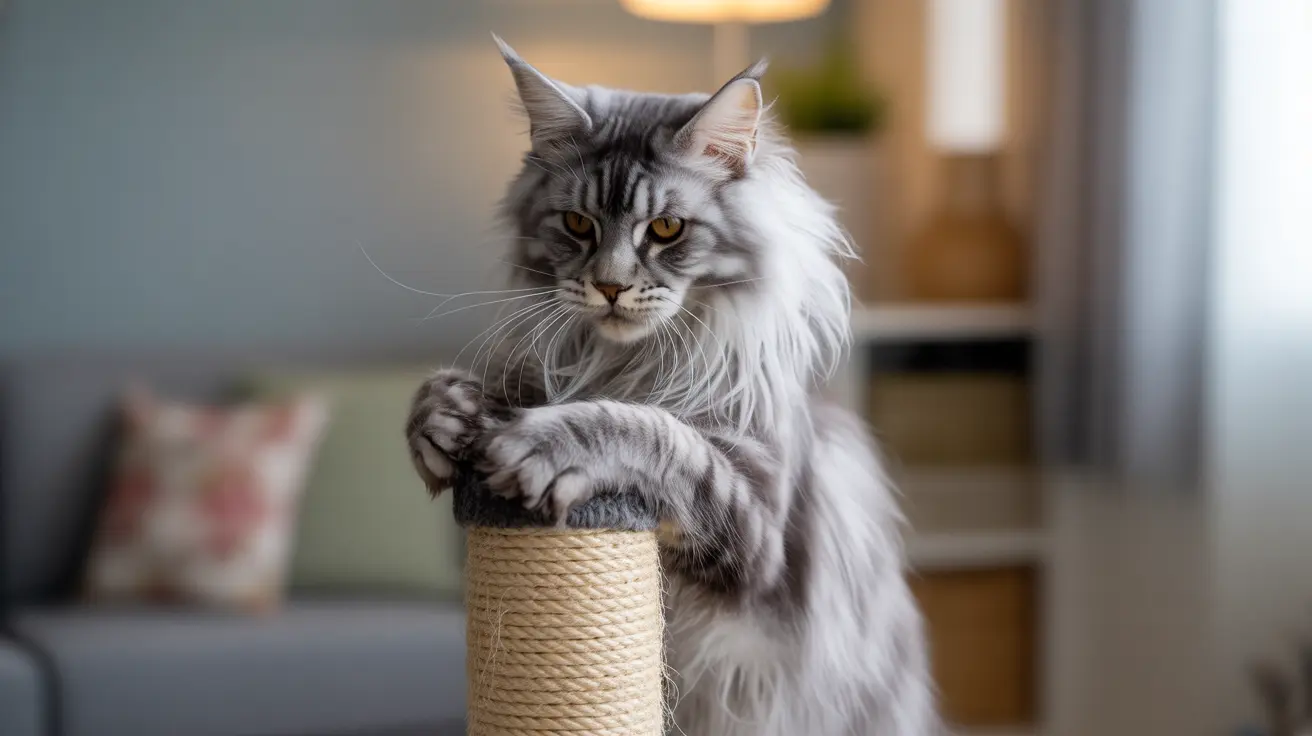Natural Nail Shedding vs. Problematic Splitting
Cats naturally shed their nail sheaths every few months as part of their normal growth cycle. During this process, the outer layer may appear to split or peel away, revealing a fresh, sharp nail underneath. This natural process is typically painless and assisted by your cat's regular scratching behavior.
However, when splitting occurs deeper within the nail structure or is accompanied by pain, bleeding, or inflammation, it's time to take notice. These symptoms could indicate an underlying issue requiring veterinary attention.
Common Causes of Cat Nail Splitting
Physical Trauma and Environmental Factors
Cats can experience nail damage from various physical causes, including:
- Getting caught in carpet or furniture
- Aggressive scratching on rough surfaces
- Accidents during play or climbing
- Improper nail trimming technique
Health-Related Causes
Several health conditions can contribute to nail splitting:
- Nutritional deficiencies, especially in protein and biotin
- Fungal or bacterial infections
- Autoimmune disorders
- Age-related brittleness
- Systemic diseases like diabetes or thyroid conditions
Prevention and Care
Maintaining healthy cat nails involves several key practices:
Regular Maintenance
- Schedule nail trimming every 2-3 weeks
- Use sharp, cat-specific nail clippers
- Provide multiple scratching posts
- Monitor nail condition during grooming
Environmental Enrichment
Create an enriching environment that supports natural nail health:
- Install scratching posts of various textures
- Position scratching surfaces both horizontally and vertically
- Consider sisal rope or cardboard scratching options
- Place posts in frequently visited areas
Treatment Options
At-Home Care
For minor splitting issues, consider these solutions:
- Clean the affected nail gently
- Apply pet-safe antiseptic if needed
- Monitor for signs of infection
- Maintain regular trimming schedule
Professional Care
Seek veterinary attention if you notice:
- Deep splits or cracks
- Bleeding or inflammation
- Signs of infection
- Persistent limping or pain
Frequently Asked Questions
Why are my cat's nails splitting—is it a normal shedding process or a sign of a problem?
Cat nail splitting can be both normal and problematic. Natural shedding involves the outer sheath splitting and falling away every 2-3 months. However, if splitting is accompanied by pain, bleeding, or inflammation, it may indicate an underlying issue requiring veterinary attention.
How can I safely trim my cat's nails to prevent splitting and injury?
Use sharp, cat-specific nail clippers and trim only the white tip, avoiding the pink quick. Make cuts at a 45-degree angle, and trim every 2-3 weeks. If unsure, ask your veterinarian for a demonstration.
What health issues or nutritional deficiencies can cause my cat's nails to split?
Common health-related causes include nutritional deficiencies (especially protein and biotin), fungal or bacterial infections, autoimmune disorders, diabetes, and thyroid conditions. A balanced diet and regular vet check-ups help prevent these issues.
When should I take my cat to the vet for nail splitting, and what treatments are available?
Seek veterinary care if you notice deep splits, bleeding, infection, or persistent pain. Treatments may include antibiotics for infections, dietary supplements for nutritional deficiencies, or specific treatments for underlying health conditions.
How can I help my senior cat maintain healthy nails and avoid brittleness and splitting?
Support senior cat nail health through regular trimming, providing appropriate scratching surfaces, ensuring a nutritious diet, and maintaining regular vet check-ups. Consider supplements if recommended by your veterinarian.
Conclusion
While cat nail splitting can be concerning, understanding the difference between normal shedding and problematic splitting helps you make informed decisions about your cat's care. Regular maintenance, proper nutrition, and prompt attention to unusual symptoms will help keep your cat's nails healthy throughout their life.






